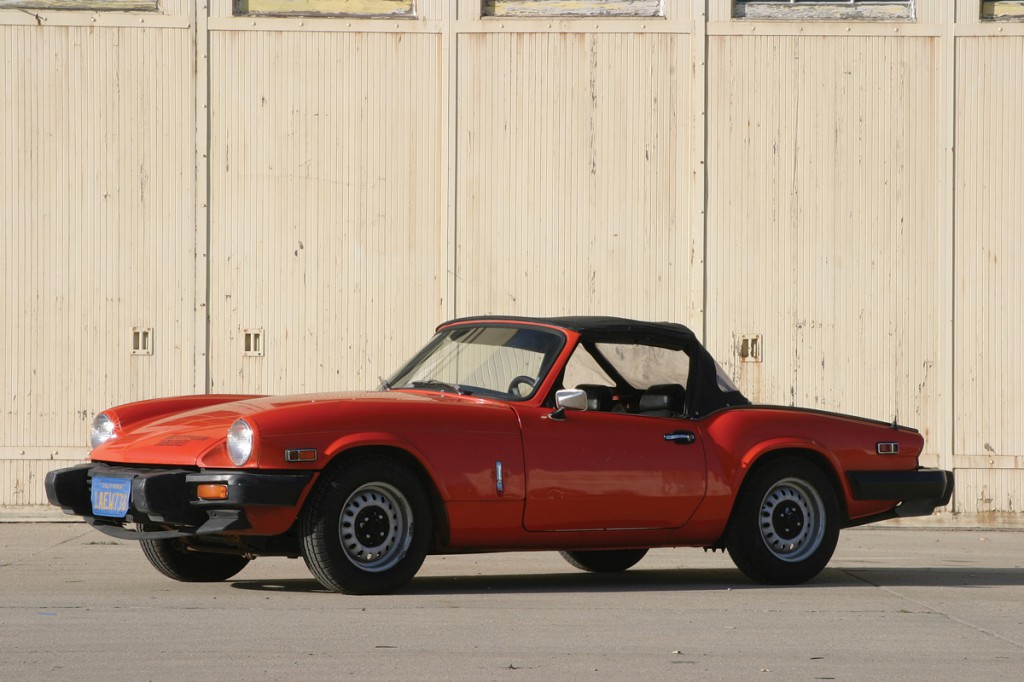
Many of us have been there: That telltale puddle of water says that something is amiss with the cooling system. Fortunately the fix is usually easy.
With the onset of the summer driving season, auto repair shops will start getting many calls about cars that overheat, or at least seem to. In an effort to get you thinking about all the things that can affect how the cooling system performs, we’ve compiled a list. It isn’t comprehensive, and some of these points will not make sense for some cars, but it may prove useful. Ultimately, it is advised that you schedule your vehicle for car servicing for a thorough inspection and/or repair.
Gauge Accuracy
Is your instrument accurate? Use a separate mechanical temp gauge, or one of the new infrared temperature sensors to verify its accuracy or learn what “N” and “H” really indicate.
What Is Too Hot?
185-195º F is fine. Going up a steep grade, the temperature will climb, often approaching 210° F. Again, this is not a problem. It will come down once you start downhill. Engine coolant temps 220° F and above are too hot because engine oil additives start to break down.
When Does It Overheat?
A car in good running order that overheats standing still but runs fine at speed doesn’t have enough air flow. A car that doesn’t overheat standing still but does at speed may have a radiator core that is not adequate for the heat generated, or the coolant is moving too quickly through the core for maximum heat transfer.
Sudden Case of Overheating For No Obvious Reason
This may indicate a mechanical problem. Check your fan belt. Do you have a leaking hose or hose connection? Check for a blown head gasket. If you can’t determine the cause of overheating, you may need to bring your car to a local auto repair shop.
Fan Size & Rotation
Are the blades installed facing the right way and pulling air through the core? More efficient fans may be available for your application.
Vacuum Advance
Check your workshop manual, and check your ignition timing at idle and at 3000 rpm. Typically, 32 to 35 degrees of advance is ideal at 3000 rpm.
Thermostat
Run a thermostat that opens at the point suggested in your workshop manual. If you have any doubts about the thermostat, make sure it’s working properly—test it in a pan of hot water with a cooking thermometer. Don’t remove the thermostat, as the coolant may be pumped through the radiator too quickly to cool effectively.
Radiator Caps
The earliest sports cars did not have a pressurized system at all. Many early cars used 4 pound caps (4 lbs./sq. in.), while later cars used 7 pound caps, and still later 10 or 14 pound caps were common. Raising the pressure raises the boiling point. Make sure the seal on the cap reaches down inside the neck far enough to actually seal. Many British cars have filler necks that are 1 inch deep and many modern caps (even those listed for your car) are made for a 3/4-inch-deep filler neck. Check that the metal disc in the cap is not cracked or warped. Run a flat file across the top of the radiator filler neck. It must be perfectly flat to seal properly.
Open vs. Closed Coolant Systems
Early cooling systems are open. When the pressure inside the system exceeds the pressure exerted by the spring in the radiator cap, the radiator vents through an overflow tube, dumping coolant on the ground. Check your coolant level—it should be about 1 inch below the sealing surface in the filler neck. Modern coolant systems incorporate a recovery tank and a special pressure cap that allows fluid (and air) into the recovery tank when the coolant heats up. When it cools down, the coolant contracts, and pure coolant (no air) is drawn from the recovery tank into the radiator. Sealed systems are more efficient, and many cars have been converted to a sealed system.
Radiator Core
When was it flushed? If the core has tubes that are partially blocked it won’t work very well. The radiator may need to be rodded out by a specialist.
Flushing the Block
A 1/16-inch layer of calcium carbonate buildup in an engine blocks heat transfer like four inches of solid cast iron. Talk to a radiator shop about what can be done to clean out the block.
Air Ducting
Many cars use seals and/or panels of various materials to direct air through the radiator. If left out, air will flow around the core.
Fan Shrouds
A fan pulls air through the core in the donut-shaped area swept by the blades. A fan shroud is essentially a large box lid attached to the back of the radiator with a big hole for the fan. The fan creates a low pressure area behind the entire core. Air flows through the whole core, making it more efficient. Aftermarket shrouds are available for many cars.
Coolant
Run a 50/50 mix of a good quality anti-freeze and water. Increasing the percentage of anti-freeze reduces the rate at which heat is transferred to and from the coolant.
Coolant Additives
Redline Water Wetter really works. It is a unique wetting agent for cooling systems which reduces the tendency of the water molecules to adhere to each other. This reduction in surface tension increases the rate at which heat can be transferred. Customers routinely report 10-12º F drops.
More Details
 Infrared Thermometer
Infrared Thermometer
This is an indispensable tool for troubleshooting cooling problems – point and pull the trigger. The laser shows you where the reading is being taken, and the large digital readout indicates the temperature in seconds. Use it to check thermostat operation and radiator efficiency. Reads in Fahrenheit and Centigrade from -76º F to 932º F (-60º C to 500º C) with accuracy of +/- 1º C.
Part # 386-265
Texas Kooler Fan
 For the six-cylinder Healey, there is no better fan. The North Texas Austin Healey Club (NTAHC) used to sell the Texas Kooler, but when the factory in Fort Worth closed and the tooling was destroyed, the fan died. Moss has reproduced the Texas Kooler in cooperation with the NTAHC. Read more about it on our Web site. For the 100-4, you will need an adaptor kit.
For the six-cylinder Healey, there is no better fan. The North Texas Austin Healey Club (NTAHC) used to sell the Texas Kooler, but when the factory in Fort Worth closed and the tooling was destroyed, the fan died. Moss has reproduced the Texas Kooler in cooperation with the NTAHC. Read more about it on our Web site. For the 100-4, you will need an adaptor kit.
Part # 834-882
Part # 834-884 adaptor kit for 100-4
Radiator Fan Shroud
The engine-driven fan in the MGB pulls air through the radiator core in the donut-shaped area swept by the blades. The rest of the core only has significant air flow at speed. With the fan shroud fitted, the fan creates a low pressure area behind the entire core. Air flows through the whole core, making it much more efficient. On average, the shroud increases the airflow through the core about 20 percent. This can make a huge difference when you are stuck in traffic or driving through town at relatively low speeds. (Note: The 459-685 fits 1962-’67 MGBs without modification. It can be installed on 1968-’76 MGBs if it is trimmed a little to clear a radiator hose.)
Part # 459-645 Radiator Fan Shroud MGA
Part # 459-685 Radiator Fan Shroud 1962-’67 MGB
 Lower Air Duct Panel MGB
Lower Air Duct Panel MGB
Mounted up in the nose, it directs air through the optional oil coolers that were mounted below the horizontal steel panel in front of the radiator on 19741/2-‘80 MGBs. This panel also directs air that enters the nose through the radiator core, and it prevents hot air that has gone through the radiator once from coming back around again under the radiator and back through the core.
Part # 475-245 19741/2-’76
Part # 475-255 1977-’80
 Rear Air Duct Panel MGB 1977-’80
Rear Air Duct Panel MGB 1977-’80
Often called a “mud guard,” this panel mounts right behind the radiator in front of the engine. The panel is essential for keeping the radiator operating at maximum efficiency. When it is missing, air flow under the front valance backs up against the engine reducing air flow through the radiator.
Part # 458-195
WaterWetter Additive for Cooling Systems
WaterWetter is a unique additive for cooling systems. It works because it breaks down the tendency of water molecules to cling tightly to one another (surface tension). 
It has been formulated to be compatible with all commercial anti-freeze mixtures, as well as the metals in your cooling system such as aluminum, cast iron, copper, brass and bronze. If you are running a mixture of water and ethylene, or propylene glycol anti-freeze, adding WaterWetter will improve the rate of heat transfer. This means heat from the block and cylinder head will be picked up by the coolant more quickly, and the coolant will eliminate heat into the atmosphere through the radiator more quickly. Customers routinely report drops of 10-15º F. If your cooling system is marginal on a hot day, WaterWetter may give you the edge you need.
Part # 220-115
For the TR2, 3, 4, 4A, Austin-Healey 100, 100-6 & 3000, and MGA:
 Thermostat, Bellows-Type, 160° F
Thermostat, Bellows-Type, 160° F
This is a Moss reproduction of the OE-type bellows thermostat, with a sleeve to block off by-pass when the thermostat opens. Suitable for systems using 4-7 lbs./sq. in. radiator caps as original. For systems over 7 lbs./sq. in., use 454-155, a wax capsule-thermostat that also has a sleeve to block off the bypass. The reason you can’t use a 434-165 bellows-type thermostat with a cap rated over 7 lbs./sq. in. is because the pressure in the system collapses the bellows, opening the bypass and causing increased operating temperatures, and possibly overheating.
Part # 434-156
 Thermostat, Wax Capsule-Type, 160° F
Thermostat, Wax Capsule-Type, 160° F
This is a wax capsule-type thermostat with a sleeve to block off by-pass. It is suitable for systems with higher-than-stock pressures (over 7 lbs./sq. in.). The wax capsule design is not affected by the higher pressure. For 4-7 lb. systems, use the 434-156 thermostat. This thermostat is designed to fail “open” instead of closed. The sleeve is in the full raised position when cold, nearly touching the top mounting flange. The closure to block fluid flow is between the inner cylindrical body and the top flange. As this unit approaches the preset operating temperature and begins to open, the sleeve moves downward (along with the cylindrical body) to block the bypass port.
Part # 434-155
By Michael Grant








'Hot Blooded – Tips to Avoid Overheating' have 3 comments
December 11, 2012 @ 7:37 pm Bob Nicolle
I live in Baton Rouge, La. and it gets hot here during the summer. My car, a ’61 MGA w/ a fan shroud, does get hot but not overly so. I would like to install a coolant recovery tank as this would keep a full radiator when working properly. What pressure is ‘normal’ and is there a recovery cap available for a 1″ deep std. radiator neck as on the MGA. I’ve also installed the Kevlar reinforced radiator hoses and new water pump. Your article is clear as to why a bellows type thermostat is not suitable for a system pressure over 7#.
March 3, 2018 @ 11:07 am Neil Stern
should check if radiator is not dirty some get full of dirt need to be cleaned
March 5, 2018 @ 6:42 am mainezman
I have used Barnacle Burster to safely clean Seawater systems on boat inboards/outboards. Removes Rust and calcium deposits. Your thoughts?